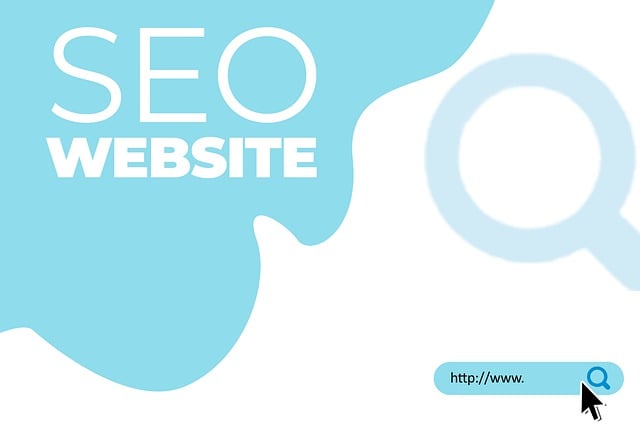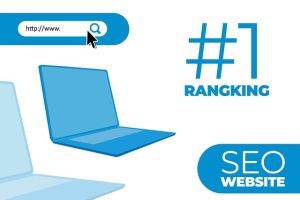Custom SEO web design is a strategic approach combining artistic beauty and technical excellence tailored to individual business needs. It optimizes every element to enhance visibility on search engine results pages (SERPs) by understanding target audiences, researching keywords, and structuring content engagingly while adhering to algorithms. Best practices include responsive design, efficient site speed, and strategic keyword placement for higher rankings in a competitive digital marketplace. This involves market research, technical proficiency, user-focused elements, continuous analysis, and data-driven improvements to boost user engagement and reduce bounce rates. By integrating keywords effectively, UX signals, and content creation, SEO web design ensures website prominence while staying agile with evolving trends for optimal online presence.
In the competitive digital landscape, a site’s success hinges on effective SEO web design. This article delves into the intricacies of custom SEO web design, providing a comprehensive guide for businesses seeking to optimize their online presence. We explore essential components like understanding search engine algorithms, keyword optimization strategies, and the crucial role of user experience (UX). Learn how technical considerations, content creation, and analytics drive success, while also anticipating future trends in this dynamic field.
Understanding Custom SEO Web Design: The Basics Explained

Custom SEO web design is a strategic approach that combines artistic beauty with technical excellence, tailored to your business’s unique needs. It goes beyond creating visually appealing websites; it focuses on optimizing each element to enhance visibility and drive organic traffic through search engine results pages (SERPs). This process involves understanding your target audience, researching relevant keywords, and structuring content in a way that both captivates visitors and aligns with search engine algorithms.
At its core, SEO web design ensures your website is not just functional but also strategically built to rank higher on Google and other search engines. It incorporates best practices like responsive design for seamless user experiences across devices, efficient site speed for reduced bounce rates, and strategic placement of keywords for better indexing by search engines. By integrating these principles from the outset, businesses can future-proof their online presence and stay competitive in today’s digital marketplace.
Why Customization Matters for Your Website's SEO

In the competitive digital landscape, a one-size-fits-all approach to SEO web design simply won’t cut it. Customization is key when it comes to boosting your website’s search engine optimization (SEO) performance. Every business is unique, with distinct brand identities, target audiences, and industry specifics. A tailored SEO web design takes these nuances into account, ensuring your site resonates with users and search engines alike.
By customizing your website, you can address specific keywords relevant to your niche, implement user-friendly navigation structures, and optimize content for both readability and searchability. This level of customization goes beyond mere aesthetics; it’s a strategic move that improves user experience, encourages longer visits, and reduces bounce rates—all factors that positively impact your site’s SEO rankings over time.
Key Components of a Successful Custom SEO Web Design

A successful custom SEO web design goes beyond aesthetics; it’s a strategic blend of technical excellence, user-centric elements, and optimized content. The key components include a responsive, mobile-first structure that adapts seamlessly to various devices, ensuring a consistent user experience. Fast loading times, efficient navigation, and well-optimized meta tags are non-negotiable. These technical foundations, when combined with strategic keyword placement, enable search engines to easily index and rank the website, driving organic traffic.
Additionally, custom SEO web design integrates essential elements like header tags, alt image text, and internal linking to enhance content accessibility and relevance. A data-driven approach using analytics tools is crucial for understanding user behavior, identifying areas for improvement, and making informed adjustments to boost search engine visibility and overall website performance.
Research and Keyword Optimization Strategies

In the realm of custom SEO web design, research and keyword optimization are cornerstone strategies. It begins with understanding your target audience, their search behaviors, and pain points. This involves in-depth market research to identify relevant keywords and phrases that accurately reflect your industry and services. Integrating these keywords seamlessly into your website’s content ensures better visibility on search engines like Google.
Effective keyword optimization goes beyond mere inclusion. It requires a strategic approach where keywords are placed optimally within meta tags, headers, and body copy. Additionally, ongoing analysis of search trends and competitor strategies allows for adjustments in your SEO web design, ensuring your online presence remains competitive and relevant in the dynamic digital landscape.
User Experience (UX) and Its Role in SEO

In the realm of custom SEO web design, User Experience (UX) plays a pivotal role in achieving top search engine rankings. A well-designed UX ensures that visitors have a seamless and enjoyable navigation through a website, encouraging them to explore further. This involves intuitive site structure, easy-to-read content, and responsive design across various devices. When users find a website accessible, visually appealing, and useful, they are more likely to engage with it, leading to reduced bounce rates and increased time spent on the page—all factors that positively impact SEO.
Search engines like Google use UX signals as part of their complex algorithms to determine a website’s relevance and quality. A positive user experience suggests to search engines that the site provides valuable content, making it more likely to rank higher in search results. Customizing web design to prioritize UX not only enhances the visitor’s journey but also serves as a strategic SEO approach, ensuring that a website stands out in a competitive online environment.
Technical SEO Considerations for Custom Websites

When developing a custom SEO web design, technical considerations are paramount. These include ensuring fast page load times by optimizing images and leveraging browser caching, implementing structured data markup to help search engines understand content better, and creating an XML sitemap for easy crawling. A solid site architecture with intuitive navigation and internal linking strategies is crucial for both user experience and search engine visibility.
Additionally, custom websites must adhere to mobile-first indexing requirements, ensuring responsiveness across all devices. Secure connections through HTTPS encryption and proper handling of redirects and 404 errors are also essential. Regular updates and maintenance, including security patches and content refreshes, contribute to a website’s long-term SEO health. These technical foundations enable search engines to index and rank the site effectively, driving organic traffic and boosting online visibility in competitive markets.
Content Creation and Integration for Maximum Impact

In the realm of custom SEO web design, content creation and integration are paramount for achieving maximum online impact. A strategic approach involves seamlessly integrating relevant, high-quality content that resonates with the target audience. This includes well-researched keywords, compelling copy, and visually engaging elements that not only capture attention but also enhance user experience. By aligning content with SEO best practices, websites can climb search engine ranks, increasing visibility and attracting organic traffic.
Effective content integration goes beyond mere placement. It involves a thoughtful design that encourages users to engage, share, and interact. This dynamic interplay signals to search engines that the website offers value, fostering a positive user experience that ultimately contributes to improved SEO rankings. A balanced blend of informative, persuasive, and aesthetic content elements ensures the website stands out in a competitive digital landscape.
Measuring Success: Analytics and Tracking Progress

Measuring success is a crucial aspect of any digital strategy, and for custom SEO web design, it’s no different. Analytics tools are essential to understanding how your website performs and where improvements can be made. By tracking key metrics such as organic traffic, bounce rate, and conversion rates, you gain valuable insights into user behavior and the effectiveness of your SEO strategies.
Regularly reviewing these analytics allows you to identify trends, pinpoint areas that need optimization, and make data-driven decisions. This iterative process is vital in the dynamic world of digital marketing, ensuring your website remains competitive and aligns with search engine algorithm updates. Ultimately, effective tracking enables you to enhance user experience, boost engagement, and achieve your business goals through tailored SEO web design strategies.
Future Trends in Custom SEO Web Design

As technology continues to evolve, so do the expectations and behaviors of online users. Future trends in custom SEO web design will need to adapt to these changes to stay effective. Voice search optimization is expected to grow, as more people use digital assistants like Siri or Alexa to find information. This shift requires incorporating natural language processing into website content and structure to ensure better relevance for voice queries.
Additionally, artificial intelligence (AI) integration will play a significant role in personalized user experiences. AI algorithms can analyze user behavior and preferences to deliver tailored content, improving engagement and conversion rates. Mobile-first design will also remain paramount as more users access the internet exclusively through their smartphones. Responsive web design that prioritizes speed, accessibility, and usability across various devices is essential for staying competitive in the digital landscape.
